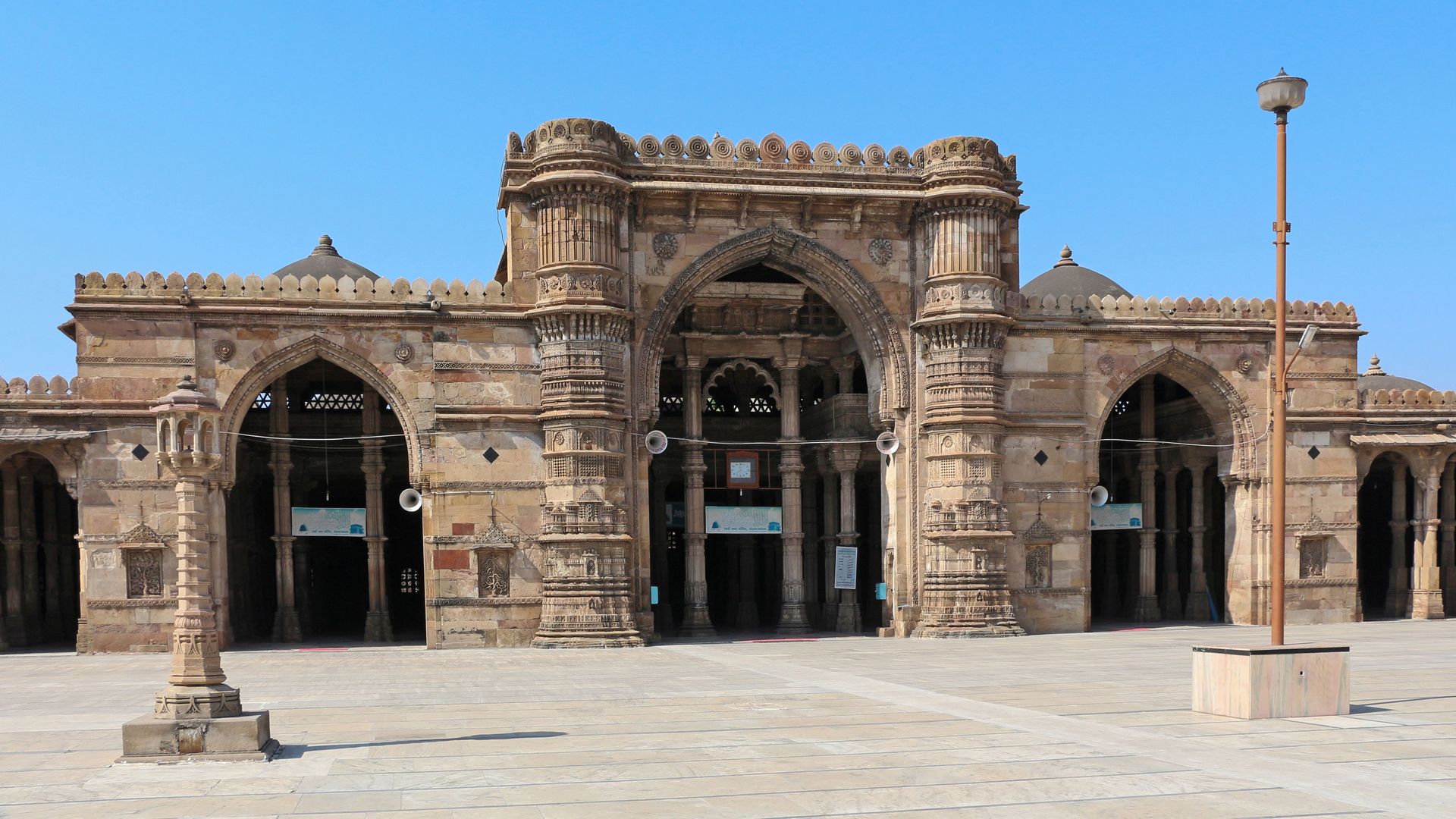Description
Property Name: Sarkhej Jama Masjid
Inventory No: 91-79-2
Date of infill of the inventory form: 2009-07-21
Country (State party): India
Province: Gujaratj
Town: Ahmedabad
Geographic coordinates: 23° 1′ 25.66″ N
72° 35′ 13.7″ E
Historic Period: 15th century, 1st half
Year of Construction: 1423
Style: Bahmanid
Original Use: Mosque
Current Use: Mosque
Architect: Unknown
Significance
Sarkhej Jumma Masjid is one of the most beautiful mosques in India. It was built in 1423 by the founder of the city, Sultan Ahmed Shah. The mosque is a great example of Indo Saracenic architecture. It presents a blend of Hindu and Muslim styles of architecture. Located at the center of the old city the mosque rests on 260 pillars, supporting fifteen domes. It took approximately 13 years to get fully constructed and is a master piece of the Ahmedabadi eclectic style. The structure is built in yellow sandstone and has a white marble courtyard, with a pool in the center. It has a huge archway in the front. The mosque is dotted by a number of striking pillars, adorned with intricate carvings. These pillars form exact quadrangles for the Friday prayers. The main prayer hall has natural light and shading through the domes and the mesh on the windows.
Selection Criteria
i. to represent a masterpiece of human creative genius
ii. to exhibit an important interchange of human values, over a span of time or within a cultural area of the world, on developments in architecture or technology, monumental arts, town-planning or landscape design
iv. to be an outstanding example of a type of building, architectural or technological ensemble or landscape which illustrates (a) significant stage(s) in human history
vi. to be directly or tangibly associated with events or living traditions, with ideas, or with beliefs, with artistic and literary works of outstanding universal significance
State of Preservation
The two tall minarets at the entrance of the mosque collapsed in an earthquake in 1819. The last time ASI carried out restoration work was about 2010 .
References
ArchNet Web Site: www.archnet.org
J. Burgess: The Muhammadan Architecture of Ahmadabad, Archaeological survey of Western India, 7-8 (New Delhi, 1997)
Y. Pandya and B. V. Doshi: Architectural Legacies of Ahmedabad (Ahmedabad, 2002)
A. Patel: “From Province to Sultanate: TI1e Architecture of Gujarat during the 12ththrough the 16th Centuries,” Marg, lviii/l (2006), pp. 36-47
Bloom, J. M., Blair S. S. (Eds.). (2009). Ahmedabad. In The Grove Encyclopedia of Islamic Art and Architecture (Vol. 1, p. 37-39). New York: Oxford University Press.
British Library, Online Gallery: www.bl.uk


